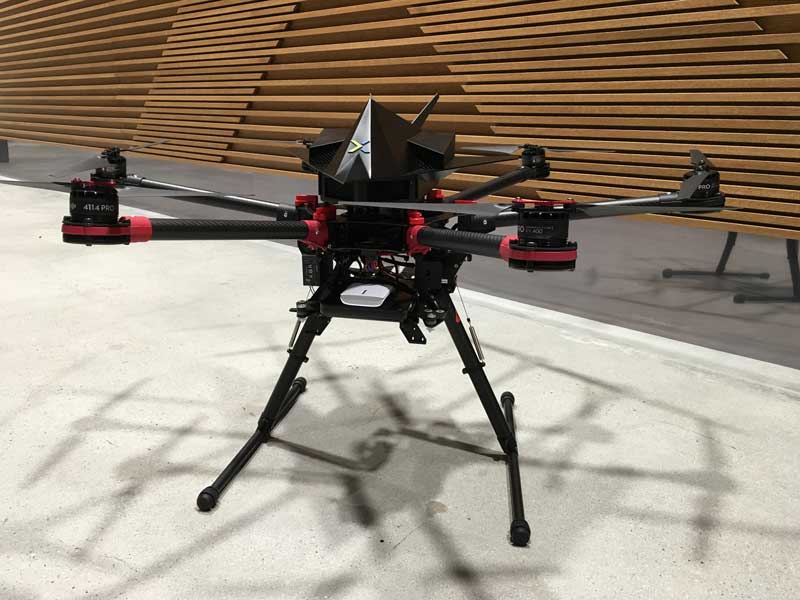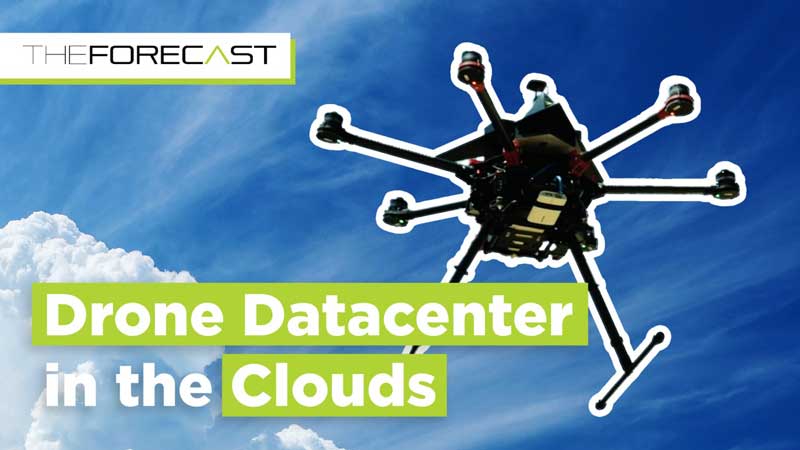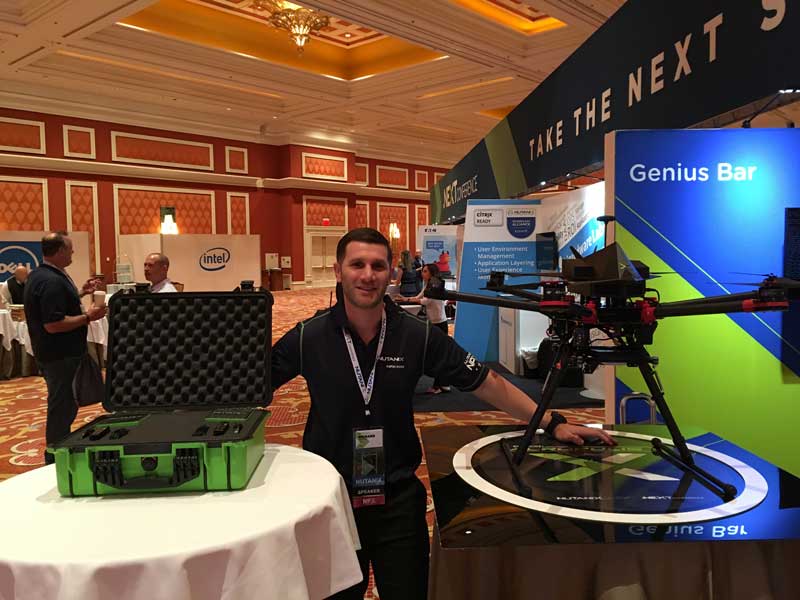When most people think of the data centers that power companies like Amazon, Google or Facebook, they envision massive rooms lined with racks of blinking, beeping computers. But Richard Arsenian has a different perspective. He believes software can make data centers small enough to fly.
In fact, Arsenian patented a first-of-its-kind data center drone.
He first launched it in 2017 at the Nutanix .NEXT industry event in Las Vegas.
“The first time I flew my drone, I felt my spirit lift with it,” said Arsenian, a principal solutions architect for Nutanix. “I was filled with ideas about how these flying data centers can power the type of innovations that will actually help people.”
Arsenian’s drones use a mini NUC, enterprise cloud software, Wi-Fi and 5G to capture, analyze and transmit valuable location data for use in agriculture, construction, transportation and even search-and-rescue operations.
“It runs on Nutanix AOS plus OpenStack using open-source API’s to communicate with a flight controller,” he said. About the size of a smartphone, the computer affixed to the drone uses hyperconverged infrastructure to operate like a scalable, private cloud computer.

His goal is to give these businesses hyperlocal, real-time edge computing capabilities.
“Drone-based edge computing enables data processing right there on the drone rather than having to send it back to the cloud,” he said. “This capability helps organizations acquire insights more quickly and use those insights for improved decision making.”
Mobilizing the Cloud
Earthbound data centers often stall information processing, Arsenian said.
"At the moment, you’ve got these independent devices out there. They're processing their own data, and they're sending it back to the cloud. In the future, we’re going to see machine-to-machine communications grow more important. These communications will bypass the cloud. Instead, communications will happen among individual machines, at the edge.”
Machine-to-machine communications are critical to transformative innovations such as self-driving cars. When roadways grow crowded with autonomous vehicles, communication among these vehicles will become vitally important to avoid accidents.
Drone-based edge computing will form the backbone of these types of machine-to-machine communications ecosystems, Arsenian said. It will enable data to be processed and acted upon with reduced latency.

Arsenian envisions clusters of these kinds of drones working in tandem to improve response time while sharing data to reduce the possibility of data loss.
“Now that we're at a place where we can start moving drone data around, if something happens to one of our drones, we can move our workloads to neighboring ones," he said.
These same transfer capabilities mean a drone cluster is hardly affected by a single machine’s battery life or storage limitations. One device can hand off its operations to another, much like in a relay race.
"The idea is to be able to create a distributed file system in the sky,” Arsenian said. “It's about having data that is highly available, protected and distributed across these drones.”
Arsenian believes that such a paradigm shift in autonomous data processing could spur all sorts of innovations. Imagine a swarm of military vehicles able to fly and capture confidential data continuously, or a flock of drones delivering packages. AT&T has already deployed unmanned aerial vehicles to provide cell coverage to disaster zones. Facebook launched solar-powered drones to bring internet access to remote regions. Drone-based data centers may help scale such efforts, Arsenian said.
Inventing Mindset
Arsenian, who was born in Australia, spent his whole life fascinated by technology. When drones entered the tech scene, he immediately wanted to build his own. As his team at Nutanix explored the idea of portable data centers, he started tinkering with drone parts from eBay.
“Every time I look at something, I just either try to reverse engineer it or figure out what else you could do with it,” he said.
He likes to ask big questions. “Where’s the world going and what are we doing as a society to improve it? How can we use technology to improve it?”
Having already had a hand in some unique inventions, including running Nutanix software in military backpacks to see how data could be processed or transported in the field of battle, Arsenian is looking toward the next frontier.

[Related story: Tactical Edge Computing for Rugged Environments]
"We've got all these autonomous devices,” he said. “Data is being generated from our smartphones, from our cars and even from underwater data centers. We want to make the most of this data. When it comes to building a platform for distributed data systems, virtualization and data storage, we’re taking the principles that we’ve learned in traditional data centers and bringing them down to these commodity drone devices.”
What’s Ahead
Arsenian envisions a future where new technologies such as machine learning and artificial intelligence are built into enterprise drone platforms. These technologies would advance drone autonomy and allow them to provide more business value.
"At the moment, people are controlling these drones, but in the very near future, these drones are going to be thinking for themselves, acting for themselves,” he said. “And at the end of the day, they’re going to be providing new services to humankind.”
That would be a very welcome innovation.
Chase Guttman is a technology writer specializing in drones. He’s also an award-winning travel photographer, drone cinematographer, author, lecturer and instructor. His book, The Handbook of Drone Photography, was one of the first written on the topic and received critical acclaim. Find him at chaseguttman.com or @chaseguttman.
© 2020 Nutanix, Inc. All rights reserved. For additional legal information, please go here.

